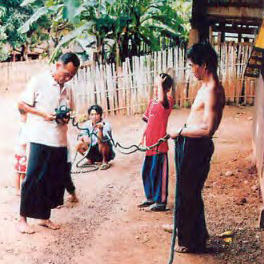งานวิจัยและบทความ

บทบาทของชุมชนและบุคคลผู้มีความมุ่งมั่นในการอนุรักษ์ชะนีมือขาว (Hylobates lar L.) ในพื้นที่จังหวัดแม่ฮ่องสอนตอนบน ภาคเหนือของประเทศไทย
โดย จรีพร นาคสัมฤทธ์ิ, ปฐม ยิ้มขาว, สมโภชน์ ศรีโกสามาตร
เผยแพร่เมื่อ 19 มิถุนายน 2024
การอนุรักษ์ทรัพยากรธรรมชาติและสิ่งแวดล้อม
แหล่งจัดเก็บทรัพยากรต้นฉบับ
Natural History Bulletin of the Siam Society (NHBSS) , Vol. 56, No. 1, 2008
ดาวน์โหลด
Information From 53 villages of seven ethnic groups demonstrated that communities and individuals play roles in gibbon conservation. Twenty-five villages with four ethnic groups (Karen, Shan, Lahu Na and Lawa) were found to protect gibbons. Karen traditional beliefs and community rules distinctively supported gibbon conservation. Cooperation with wildlife sanctuary personnel and individual contributions were also important in many villages. Loss of traditional beliefs and destructive exploitation by ethnic groups have tended to promote large-scale hunting of wildlife, including gibbons. The role of individuals in gibbon conservation is diverse. In a few cases, senior hunters who have observed and appreciated gibbon family life do not hunt them. There were approximately 293 individual gibbons in 66 groups of 33 subpopulations left in this surveyed area. Sub-populations consisted of 1-35 individuals, and contained from 1-7 social groups. Most groups occurred near Karen communities where people showed positive responses toward our conservation actions. The knowledge gained from this investigation will be used to prepare a strategic plan to protect gibbons and other wildlife in Mae Hong Son in the near future.